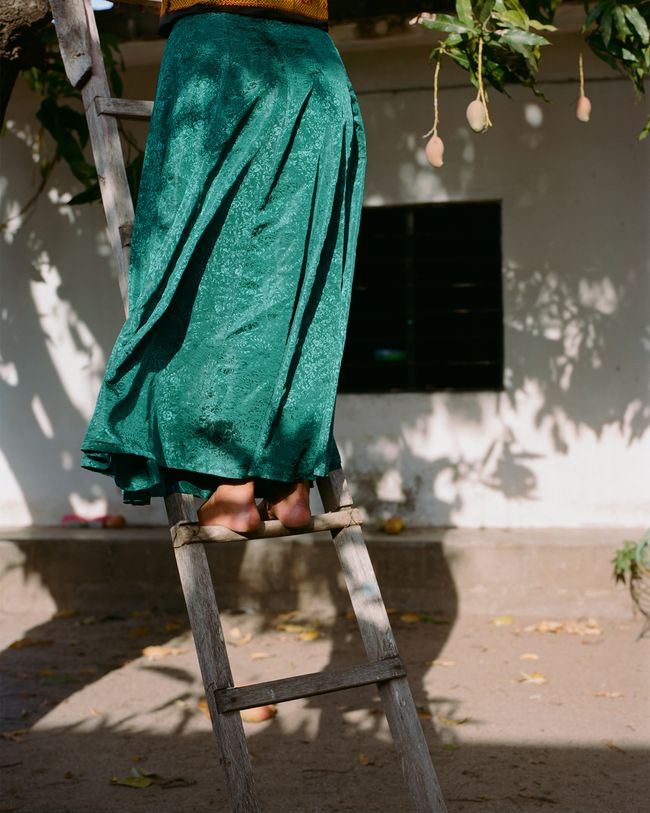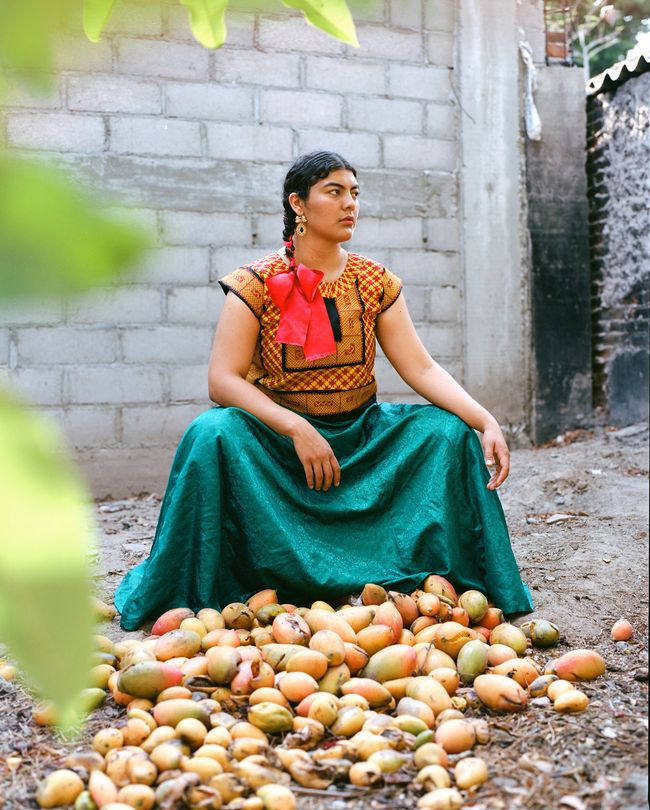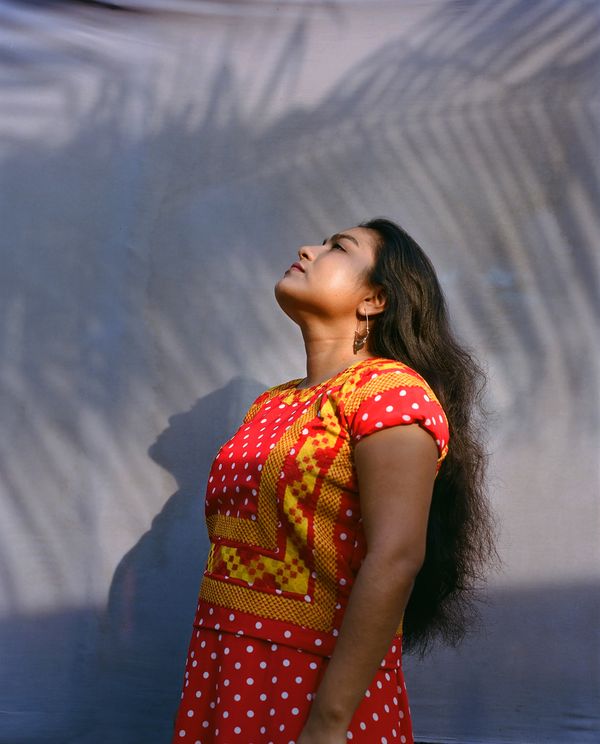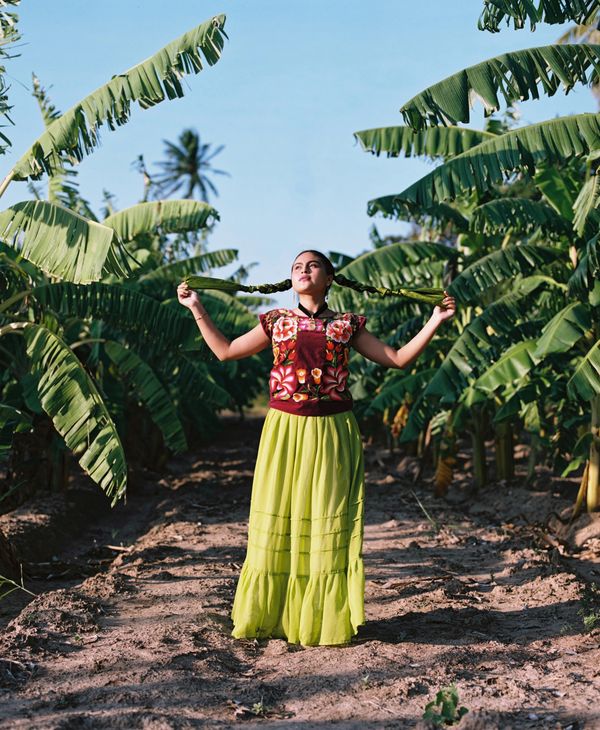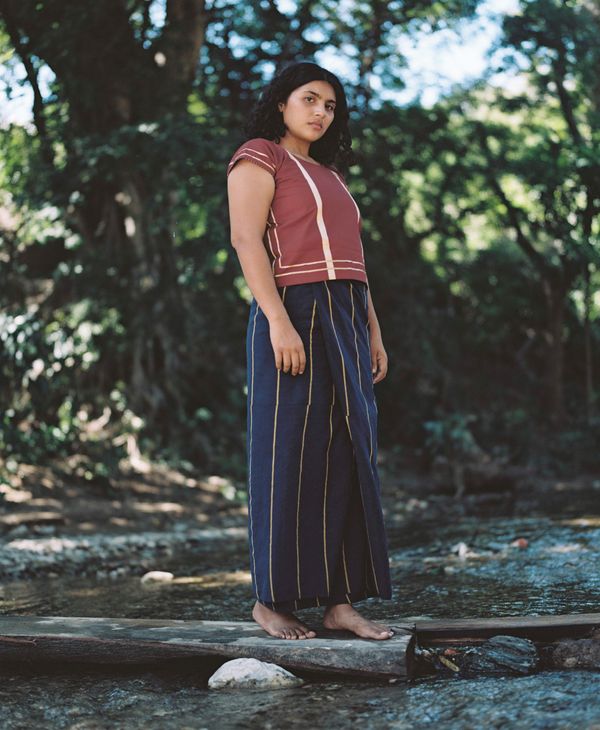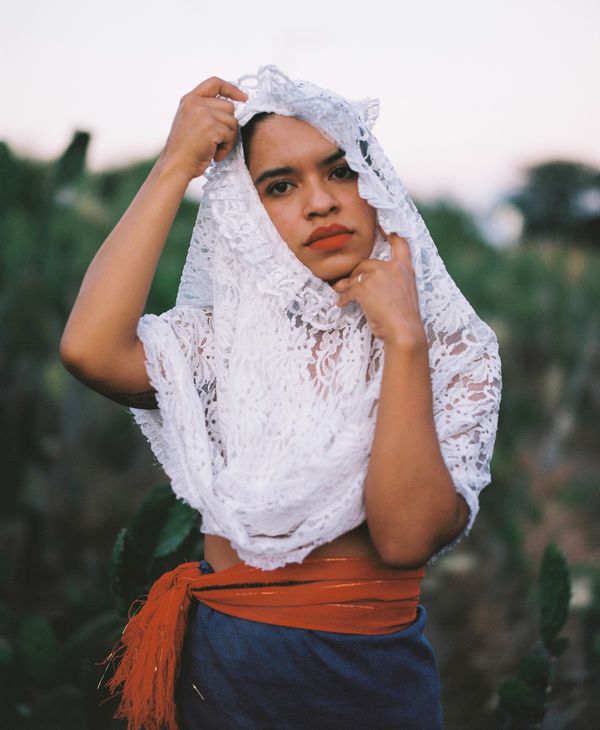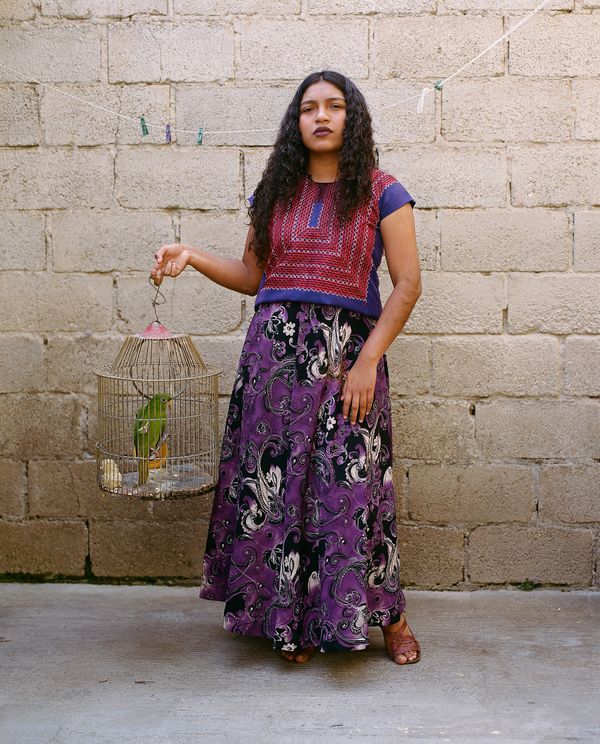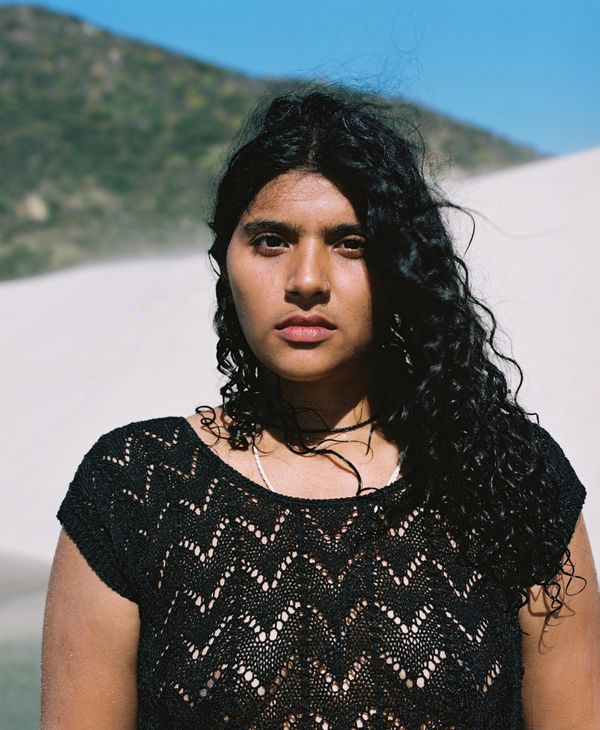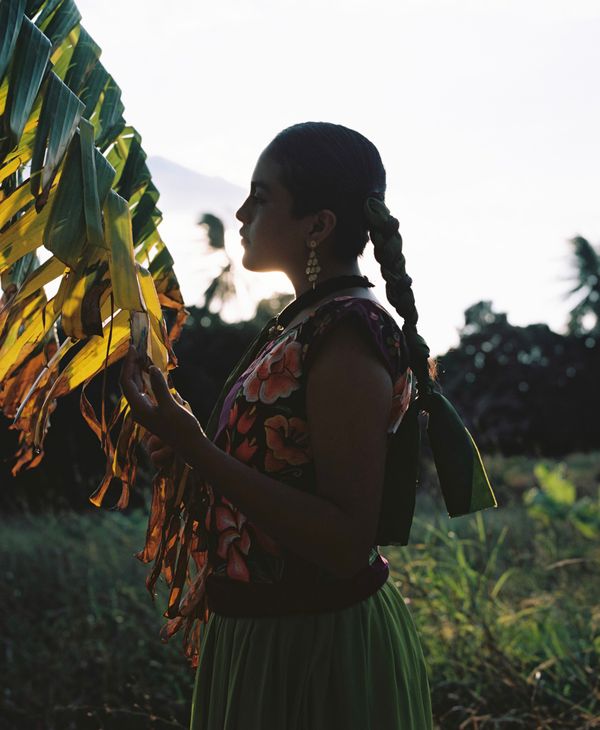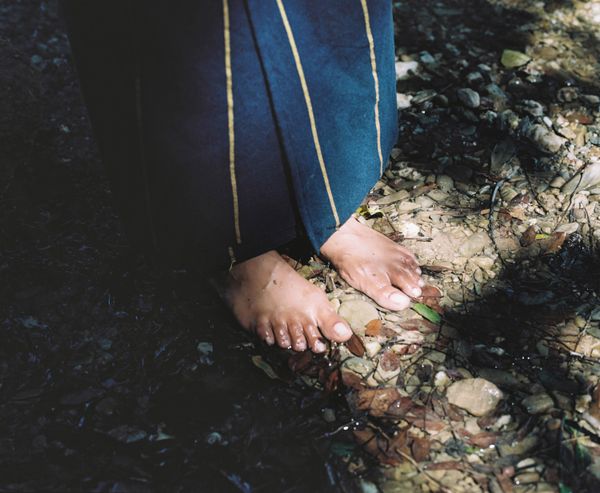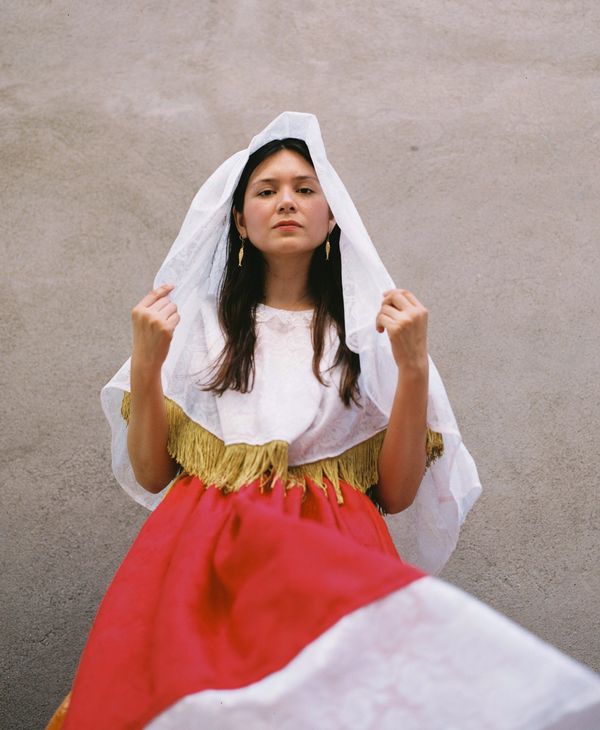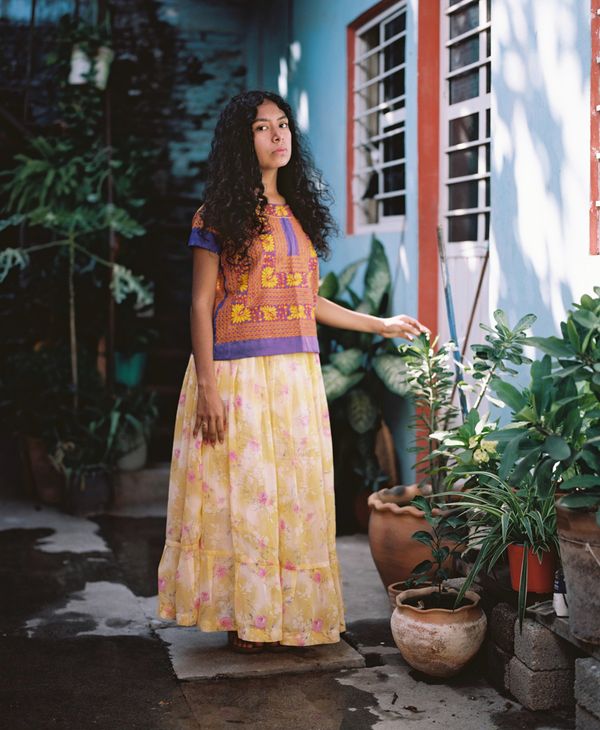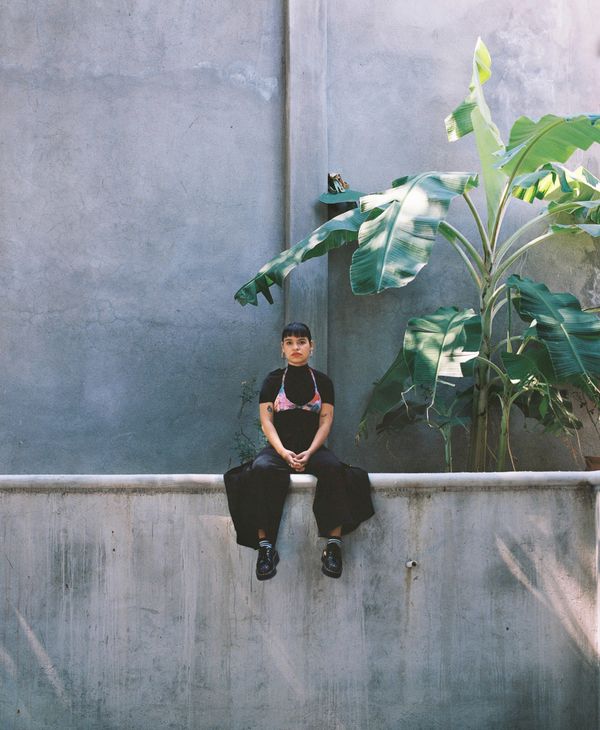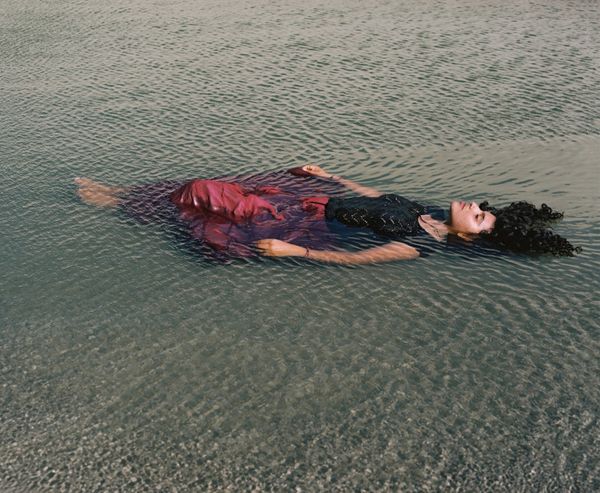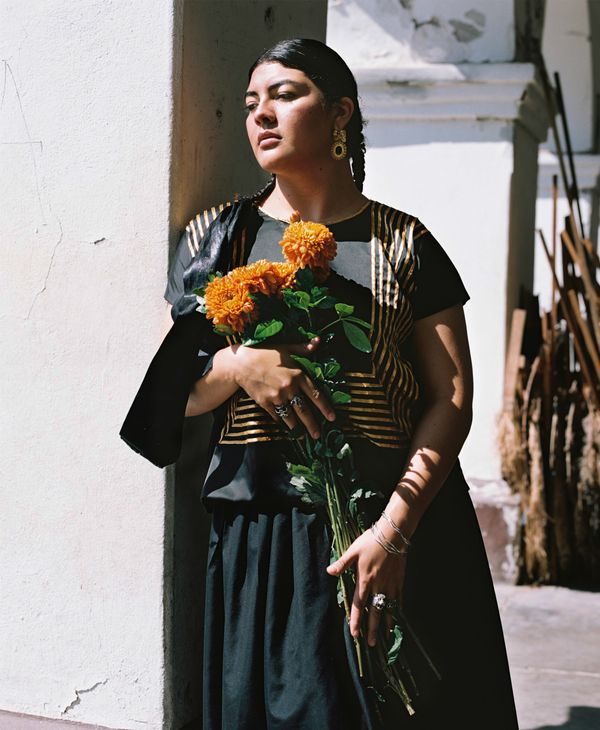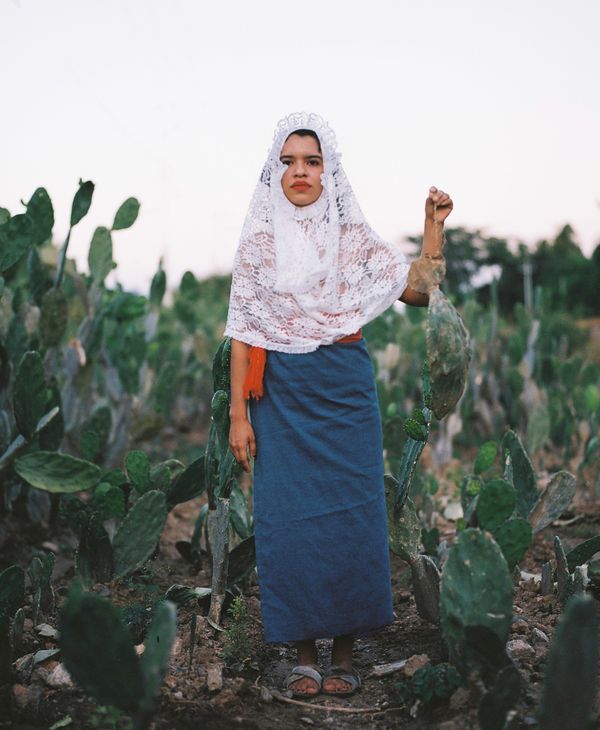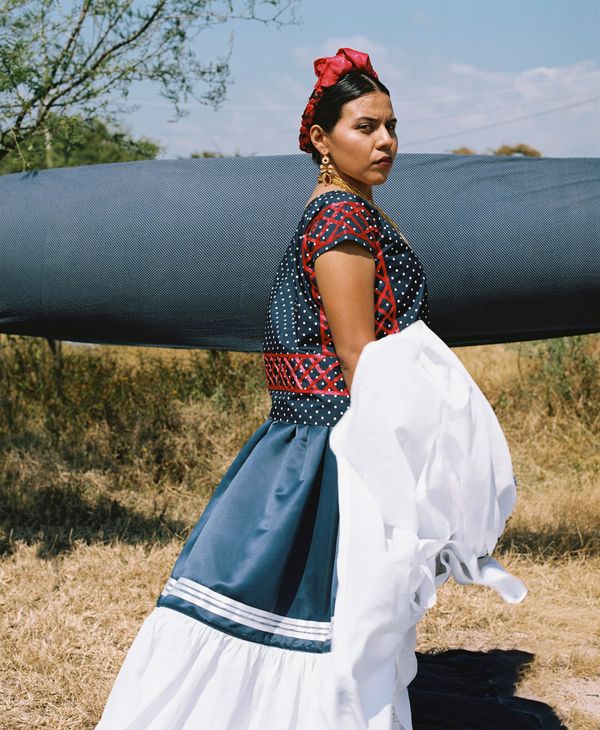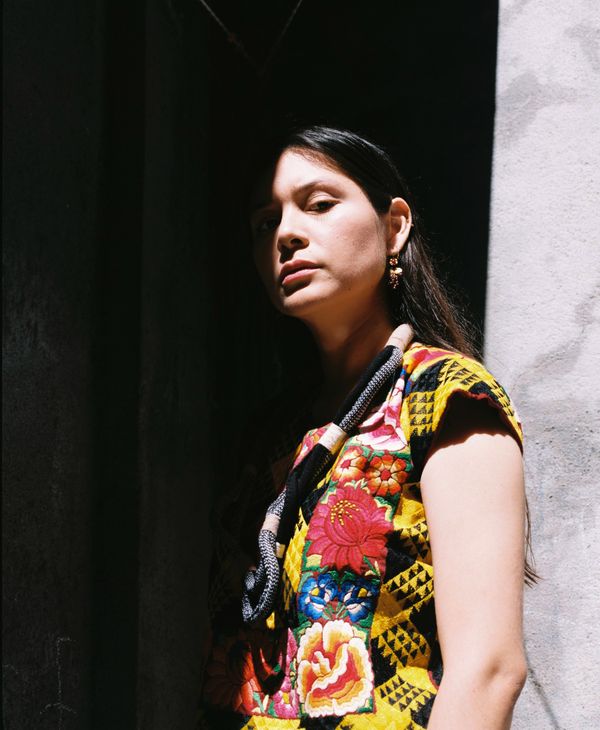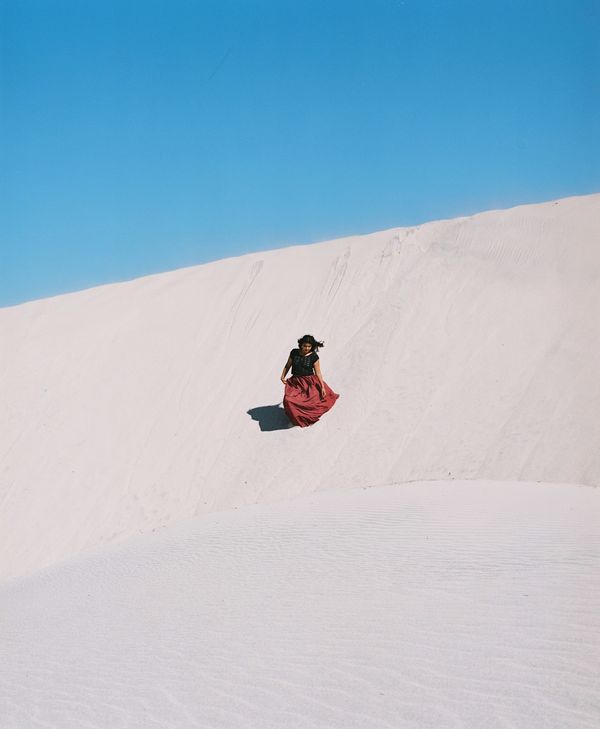Vestidas de Viento (Dressed with the wind)
-
Dates2018 - Ongoing
-
Author
-
Recognition
ARTIST STATEMENT
In my projects portraits occupy a special place, they are made from conscious listening and observation. They contain the interactions, and though-feelings shared with the subjects. I create from collaborating with the women I photograph, with their consent. Body, place and traditions are present as strong elements. It means an opportunity to share ideas, and make statements about identity.
On my 1st trip to Mexico, I entered the Isthmus of Tehuantepec, a land with a carpet of mangos, an earth that shakes and breaks, a wind that dances with the dust, a sun that itches, and where women that are known for their flowers and very strong presence. I started ‘Vestidas de Viento’ (dressed with the wind), allowing me to dig beyond aesthetics, with the awareness that they are now subject to cultural extractivism too. As I met women, I started learning what it means for them to be ‘Gunaa Teca’ (Zapotec for women from Juchitán).
For the series, I am mixing reconstructed tradition by tracing its history with contemporary approaches. Women wear a garment of choice (mostly inherited from their grandmothers) or historical reconstructions designed by Mayra Cernas. I look at the connection to ancestry and the land, where women are embracing and transforming their own identity. This is the duality between colonialism and resistance. In the bodies, in the garments, and in the land.
The huipil (traditional top) is a meaningful piece that carries memory. It’s also becoming so popular, that it is now being mass produced. It can also be found piled in markets with the original patterns digitally printed. It was clear to me that what is happening to this single item was a reflection of what is also happening in the territory, and around the world. Today, we consume 5 times more clothes than what our grandparents used to, making fast fashion the 2nd largest polluter on earth. Yet some communities still craft and pass their garments, generation to generation, where tradition resists over trends.
ABOUT THE PROJECT
‘ A young women of Tehuantepec’ is the title of the first image registered of a woman wearing a traditional dress in the Tehuantepec Isthmus of Oaxaca, Mexico. It was a lithography made by artist Claudio Linati in 1826, as part of a series that depicted the mexican ‘types of people’. The women is standing by a nopal (cactus) with a hand resting on her waist, slightly tilting to the right. She wears a long skirt that marks her crotch and curves. As a top she wears a transparent piece, it is a sort of cape that falls from her head down. This image comes from a research done by Mayra Cernas, a textile creator that researched the representation of Tehuana women in traditional dresses as part of her art history studies, focusing on fashion materiality and techniques. She replicated some garments and was able to prove how these garments actually shape in different bodies from what was originally shown in historical representations from outsiders. We agreed that they were clearly showing the male, eurocentric gaze, over indigenous women. A gaze that tended to present female bodies as subjects of desire. Linati's image is followed by flood of artists that visited the area up until today. Many just staying on the aesthetics and folklorization.
I'm also an outsider, yet in my portrait series I connect with the women I photograph, resonating with their stories and inviting them to choose how they want to represent themselves. In the series, I mix images from my collaboration with Mayra, where women embody the historical garments, with images where women wear garments they generally inherit from their grandmothers and still wear today. Together, we reclaim the context, we propose other ways to pose and we aim to deconstruct ideas of what daily life means for a woman in Mexico (and the world) today.
I observe their connection to ancestry and the land, where both are under constant struggles and in urgent need to be treated with respect.I started to wonder how is this a metaphor to how female bodies are valued? How are the Zapotec (and other indigenous traditions) resisting or transforming? What do these garments mean for them today? Who are the women if they they chose not to wear them?

